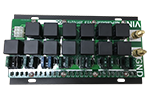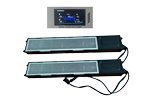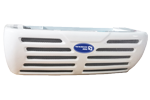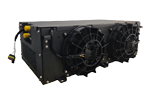1. Composition and working principle of air conditioning and ventilation system
The process of sending fresh air into the car and expelling dirty air is called ventilation. The air conditioning and ventilation system can effectively ensure the freshness of the air in the car, and at the same time, the ventilation can also defog the windshield. my country has already set strict standards for the air quality of automobile air conditioners, requiring that the amount of fresh air input per person per hour is not less than 20.
There are three main ways of ventilation for automobile air conditioners, natural ventilation, forced ventilation and comprehensive ventilation.
1) Natural ventilation
The external circulation system in automobile air conditioners refers to natural ventilation. Natural ventilation is the use of the difference in wind pressure between the inner and outer surfaces of the vehicle body during the driving process to open vents in appropriate places. Usually the air intake is located in front of the co-pilot. The air passes through the air chamber cover and passes through the vents on the vehicle body. When entering the room, the exhaust port, also called the pressure relief port, is set on the left and right side panels, and the indoor air flows out of the outdoor from here, and finally realizes the ventilation of the air in the car in a closed state. Of course, the most natural ventilation is to open wind windows or skylights.
As shown in the figure below, air inlets and outlets are opened on the inner and outer walls of the vehicle body. The wind pressure generated when the vehicle is running is used to introduce the external air into the vehicle and circulate it before being discharged.
The air inlet is set in the positive pressure zone, and the outlet is set in the negative pressure zone to form a natural flow of air. The inlet and outlet settings must ensure that the air in the car has a slightly positive pressure, so that the air pressure in the car is slightly higher than the outside atmospheric pressure to prevent harmful gases from entering the car.
2) Forced ventilation
When the car speed is low, or when the car is parked, the air pressure difference between the inner and outer surfaces of the car body is insufficient. Only relying on natural ventilation cannot guarantee the freshness of the air in the car. This time, forced ventilation is required. The main component of forced ventilation is the blower. When the blower is working, it will force the fresh air from outside the car into the compartment, and finally achieve ventilation.
3) Comprehensive ventilation
Comprehensive ventilation refers to the simultaneous use of natural ventilation and forced ventilation in automobiles. At present, comprehensive ventilation methods are basically adopted in automobiles.









.png)






.jpg)
